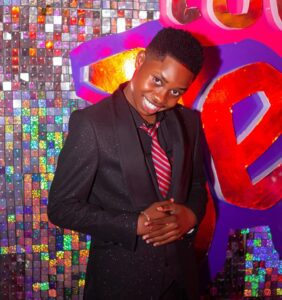
Biography
Peller Tiktok whose real names are Habeeb Hamzat is inspired by American streamers, Kai Cenat and iShowSpeed. is a rising content creator, streamer, Gamer, entertainer, and multi-talented individual who has gained widespread fame for his creative skits, dance videos, and engaging content on TikTok. Known for his charismatic personality and trend-setting abilities, he has become a household name on the platform and beyond.
Early Life and Background
TikToker Peller was born May 10th 2005, in Lagos, Nigeria. Growing up in a vibrant and culturally rich environment, Peller showed a deep passion for the arts and entertainment from a young age. He attended Sunshine High School. His upbringing in a closely-knit family influenced his comedic sense of humor and storytelling ability, which later became defining features of his TikTok career.
TikTok Career
Peller began his TikTok journey in 2020, during the global lockdowns, and quickly garnered attention for his creative and relatable skits. By 2025, Peller has amassed over 8 million followers and over 270 million likes on the platform. His content resonates with viewers because of its blend of humor, relatable situations, and visually engaging production.

Transition to Music and Film
In addition to TikTok, Peller ventured into music and film. He released his debut single, “Vibes Only,” in 2023, which topped the charts in Nigeria and gained significant traction on streaming platforms internationally. His breakout role in the movie “Rhythm of Fate,” released in 2024, showcased his acting talent and earned him critical acclaim.
Personal Life
Peller is known to keep much of his personal life private. However, he has been rumored to have a romantic relationship with Jarvis, a popular influencer and collaborator. Fans often speculate about the nature of their friendship, but Peller remains tight-lipped, letting his work and partnerships speak for themselves.
Age
TikToker Peller was born May 10th 2005, making him 20 years old as of 2025.
VIEW ALSO :
- Jarvis Jadrolita Biography, Age, Boyfriend, Net Worth
- Salle Biography, Wiki, Age, Net Worth, Parents, Real Name
Net Worth
As of 2025, TikToker Peller’s net worth is estimated to be $100 million. His earnings stem from brand endorsements, TikTok partnerships, music sales, acting gigs, and other entrepreneurial ventures.
Movies
- Rhythm of Fate (2024): Peller played the lead role in this romantic drama that explores themes of love, betrayal, and self-discovery.
- The Hustler’s Dream (2025): A motivational film that features Peller as an ambitious youth overcoming challenges to achieve his dreams.
Cars
Peller is known for his love for luxury cars and currently owns:
- Tesla Model X: A sleek and environmentally friendly SUV.
- Mercedes-Benz G-Wagon: Known for its rugged elegance.
- BMW i8: A high-performance hybrid sports car.
Songs
Peller has released several hit songs, including:
- “Vibes Only” (2023)
- “Energy Never Dies” (2024)
- “On Top” (2025)
Relationship with Jarvis

The bond between Peller and Jarvis has been a point of interest for fans. The duo frequently collaborates on TikTok, creating viral content that showcases their chemistry and shared humor. Despite ongoing speculation, Peller refers to Jarvis as a close friend and creative partner.
Social Media Handles
- TikTok: @RealPeller
- Instagram: @PellerGram
- Twitter: @RealPeller
- YouTube: PellerTV
Wikipedia
| Attribute | Details |
|---|---|
| Full Name | Habeeb Hamzat |
| Nickname | Peller |
| Date of Birth | May 10th 2005 |
| Place of Birth | Lagos, Nigeria |
| Nationality | Nigerian |
| Age | 20 |
| Profession | TikToker, Actor, Musician, Influencer |
| Known For | TikTok skits, Nollywood movies, Music |
| TikTok Followers | 7.7 million (as of 2025) |
| Notable Movies | The Lagos Dream, Forbidden Tides, Chronicles of the Hustler |
| Net Worth | $100 million (as of 2025) |
| Car Collection | Mercedes-Benz G-Wagon, Range Rover Sport, BMW i8 |
| Relationship with Jarvis | Close friends and frequent collaborators on TikTok |
| Debut Single | “Life of the Hustle” (2023) |
| Collaborations | Joblaq, Jadrolita |
| Social Media Handles |
|
FAQs
-
What is Peller’s real name?
Habeeb Hamzat is his real name; “Peller” is his popular nickname.
-
What is Peller’s net worth?
As of 2025, his net worth is estimated at $100 million.
-
What movies has Peller’s starred in?
He has starred in The Lagos Dream, Forbidden Tides, and Chronicles of the Hustler.
-
What is Peller’s relationship with Jarvis?
Habeeb and Jarvis are close friends and frequent collaborators on TikTok.
-
How old is Peller and Jarvis
Peller is 20 while Jarvis is 22 in 2025
-
What are Peller’s favorite car brands?
He owns luxury vehicles such as a Mercedes-Benz G-Wagon, Range Rover Sport, and BMW i8.
-
Where can I find Peller’s on social media?
He is active on TikTok: @RealPeller, Instagram: @PellerGram,, Twitter: @RealPeller , YouTube: PellerTV
-
Is married Peller?
Peller is currently engaged to Jarvis (Jadrolita) who he proposed to in 2024, although Jarvis jokingly calls it a promise ring
-
Why is he called Peller?
The nickname is inspired by the late magician Professor Peller, reflecting Habeeb’s creativity.
-
What are Peller’s main talents?
He excels in comedy, Gaming, acting, music, and social media influencing.

